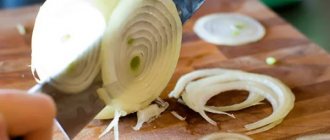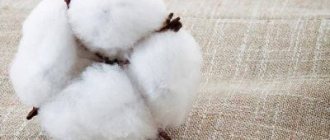Fabric Features
Terry fabric is used to create robes, home clothes, blankets and towels. The material is durable. What are its distinctive characteristics:
- It is hypoallergenic and is supplemented with natural fibers to create clothing. For example, silk, cotton. Therefore, such dressing gowns are pleasant to the body and do not cause irritation or allergies.
- Terry fiber can withstand high temperatures, so it can be washed in different washing modes.
- Terry fabrics are shape-resistant and not subject to deformation. Even with a large number of spins during machine washing, the clothes retain their original shape.
- Such material is painted with strong dyes. Because of this, it retains its color characteristics for a long time.
A terry robe is not only pleasant to the body, it has a warming effect that tones the skin and restores blood circulation.
What you need to know about washing?
To begin cleaning the product from contaminants, you should familiarize yourself with the tips for carrying out the procedure:
- The first thing you need to pay attention to is the label of the robe. There, the manufacturer indicates information about acceptable and unacceptable actions with the item. Some items contain synthetic fibers, so contact with water may be prohibited in such cases. Then the clothes will have to be taken to the dry cleaner.
- If there is a stain on the robe from difficult-to-wash substances, such as wine or oil, then it must be pre-soaked. To do this, warm water is drawn into a basin, the item is placed in it, and detergent is applied to the stain. After 15 minutes, the robe can be put in the washing machine.
- It is recommended to wash terry products separately from other items. This material tends to absorb moisture and expand during washing. This principle will help prevent the development of machine breakdowns.
- It is better to turn the terry robe inside out before cleaning. This will help preserve the characteristics of the fabric and the density of its fibers.
- Such things retain their shape for a long time, however, many experts still advise reducing the number of revolutions during washing. This applies to clothing that contains admixtures of other fibers in its composition.
- For washing, you should use universal powders or gels. They should not contain aggressive elements, bleaching particles, dyes or granules. The most suitable product is an all-purpose detergent suitable for washing colored and light-colored items.
- To keep the robe soft and its fibers fluffed up, it is recommended to add a small amount of fabric softener.
- It is better to dry the product in a horizontal position. To do this, use a hanger or hanger. After washing, the robe must be hung over the bathtub. When all the liquid has drained, the item can be transferred to the balcony. Drying requires fresh air and room temperature. It is not advisable to dry your robe in the open sun.
Washing in a washing machine - rules
Terry, Russian colloquial name for natural fabric with loops elongated on one or both sides.
They give it special softness and the ability to hold back the cold. Advantages:
- Cotton, linen or bamboo are used for production, producing a hypoallergenic, natural material.
- High hygroscopicity. Bath towels and shower robes are made from this fabric.
- The ability to withstand high temperatures was included in GOST back in the USSR. It was then that the need arose for soft fabric that could be used in hospitals and childcare facilities.
- Resistant to deformation and wear. Like all natural materials, terry products can withstand up to fifty washing cycles.
- Long-term color retention. This fabric is dyed only with permanent dyes that do not fade or wash out.
- A light massage effect on the body that improves blood circulation and skin tone.
Let's figure out how to properly wash a robe.
Preparing for washing
When washed with aggressive detergents or chlorine-containing bleaches, the terry becomes harder, may lose color and ugly stains and streaks will appear on the fabric. In order for robes to keep their shape and wrinkle less, polyester is sometimes added to natural fibers.
A heavily soiled terry robe can be soaked before washing or stubborn stains can be treated with a chlorine-free bleach such as Vanish or Ariel.
There are only a few important nuances for this process that can help preserve the structure of the fibers and effectively clean them:
- When using automatic washing machines, terry robes should be washed separately from other items. This fabric strongly absorbs water and increases in volume several times.
- If the product has one-sided pile, then it is better to turn it inside out.
- When spinning, it is necessary to reduce the speed so as not to deform the fabric. At high speed, a heavy, wet robe can stretch out greatly, turning into a shapeless robe for a scarecrow.
- To maintain the pleasant softness of the robe after washing, add conditioner when rinsing. This will help fluff up the loops of the pile and make it even warmer and more pleasant to the touch.
In addition, you should carefully remove the robe and straighten it on the rope. This fabric takes quite a long time to dry and any wrinkles increase the drying time.
As a rule, terry robes are washed in an automatic machine, and hand washing is possible only in exceptional cases. This procedure will require considerable physical effort, because the fabric absorbs a lot of water and becomes very heavy. You will need a bath and an assistant who will lift the robe onto a rope.
When washing by hand, it is also better to use liquid detergents and add conditioner when rinsing. Do not rub contaminated areas too hard; you can damage the lint on the fabric. It is better to first apply a stain remover to these areas and then wash them.
It is recommended to wash this type of household clothing immediately after purchasing it in a store, since it is considered a personal item. In addition, the characteristics of terry fabric are such that after washing in the correct mode, the fibers straighten, become softer and fluffier, so the robe will look even better.
- A spacious and fluffy robe made of terry cloth is quite voluminous and can take up a lot of space. In this regard, if you use a machine wash, such an item should be placed in the machine alone, as it can take up the entire drum.
- It is also not recommended to combine the process of washing an item with a terry surface with something else, for the reason that third-party fibers from other clothes stick well to the fibers.
- Never wash a white robe with colored items, as well as with clothes that have zippers and buttons that can catch the terry loops, otherwise its appearance will be hopelessly ruined.
- Do not use a machine spin at high speeds. As a result of friction of the fabric against the walls of the drum, the loops can stretch, and the robe itself can become deformed.
- Before washing the item, you can soak it in cool, salted water for a while, then rinse it in plenty of water. This will help maintain the color and softness of the fibers longer.
- The use of bleaching and stain-removing agents for terry cloth is extremely undesirable, as they aggressively affect its delicate structure.
Terry, silk or satin robe - clothes for home use. But this does not mean that you can approach washing carelessly. If you wash your robe incorrectly, it will quickly lose its softness, become less bright, and take on a worn look.
We invite you to read: What does the spin class of a washing machine mean?
When washing a product, there are several points to consider:
- the material of the item - cotton, terry and silk - can be washed in different modes; delicate fabrics require gentle treatment;
- water temperature - cotton items can be washed at temperatures up to 60 ° C, sensitive fabrics are treated exclusively in water 30-40 ° C;
- type of cleaning product - for home clothes it is better to use gels with a hypoallergenic composition;
- water hardness - this aspect is especially important for terry items, which can lose their softness and become prickly if exposed to too aggressive an environment.
It is customary to put home clothes into the wash together with T-shirts and towels, but it is better not to add jeans and sweatshirts to dressing gowns in the machine; they require other cleaning modes.
It is customary to wash dressing gowns in water at about 40 °C to preserve the softness of the fabric
. Important! It is recommended to wash household clothes regularly, without waiting for serious dirt to appear; old greasy stains and shine are very difficult to remove from any fabric.
In most cases, you can wash home clothes either in a machine or by hand. If the product is made of delicate material, then you can choose manual processing, in other cases it is easier to use an automatic machine.
Before washing in a machine, you must first prepare the clothes for processing. If the product has pockets, remove all the little things from them, using a brush to remove threads, hair and pet fur from the fabric. If there are serious stains, it is recommended to first soak the item in a basin with laundry soap, and only then put it in the wash:
- It is best to set the mode in an automatic machine to delicate. For cotton products, you can set the appropriate program for cotton.
- The temperature should not exceed 60 °C. Products made from sensitive fabrics are washed at 30-40 °C; hot water is harmful to silk and satin items.
- The selected liquid gel is poured into the powder compartment. You need to wash your household clothes with a product that does not contain chlorine, otherwise the product may acquire an unpleasant odor and, moreover, is highly likely to irritate the skin.
- The spin mode is turned off, but the rinse is set to double to reliably remove the remnants of the washing gel from the fabric fibers.
When machine washing, it is better to turn off the spin for bathrobes or set the minimum speed
When washing a terry product, you can also add 1-2 large spoons of baking soda to the powder compartment. The product will help soften the water and keep the terry soft and fluffy.
Hand washing is usually used for lightweight items made of silk, satin or microfiber. The procedure looks like this:
- water with a temperature of about 40 ° C or lower is poured into a large basin;
- add the selected detergent to the liquid, and, if necessary, laundry soap or soda to remove stubborn stains;
- The item is immersed in water and turned over several times so that it gets evenly wet.
The product is left in a bowl of water for 2 hours, during which time the detergent will have the desired effect on the fabric fibers and soften the dirt. Then the product is washed with light movements for several minutes, especially carefully treating the sleeve cuffs, collar and hems. The washed item must be rinsed thoroughly three times in a row, and then gently wrung out without twisting and hung to dry.
When hand washing in a basin, you need to use warm water and do not overdo it with mechanical action.
Advice! When processing household clothes in a basin, it is not recommended to actively rub them with your hands. The movements should be gentle and whipping, in which case the product will not stretch.
What problems might you encounter?
If you need to wash a terry product along with other things, you should remember the rules for selecting clothes. Accessory items should not have locks, sequins, rivets or metal inserts. During the process, these elements can touch the terry fiber and lead to its damage. For machine washing, you need to choose natural, non-fading fabrics. This will help preserve the color characteristics of the robe.
It is prohibited to load woolen items into the drum with a terry robe. During the process, fragments of wool fall onto the robe, forming lumps and pellets on it. This leads to additional cleaning procedures.
Recommendations
Advice from experts will help you cope with washing things better, spending a minimum of effort. These recommendations include:
It is advisable to wash a new robe before first use. This is necessary to maintain the hygiene of the product and to make the material more soft.- If the robe is white, then it is better to wash it separately from other things. The maximum is to add white towels made of the same material to the drum.
- Proper use of the robe helps extend its life. You should not cook food, clean, or do other dirty housework in such a thing.
- Terry absorbs various odors very well, including food and tobacco. Washing with conditioner will help solve the problem.
- If there is not enough water during washing, the item will remain dirty, and if there is not enough water during rinsing, it will become soapy and unpleasant to the touch. Processing terry requires a lot of water; it can only be saved at the expense of the quality of the wash.
- It is recommended to hand wash the robe using rubber gloves. If this point is ignored, then it is simply necessary to remove the rings and bracelets so as not to put any snags on the fabric.
Hand washing rules
If the label of the robe indicates that it can only be hand washed, then it is better not to risk it and not wash it in a machine. It is worth noting that this manual cleaning is a rather difficult and lengthy procedure that will take several hours. It is advisable to have an assistant who can help you wring out and turn the item over. When wet, terry becomes much heavier. How to complete the procedure:
- Fill a large basin with warm water; the washing temperature should be within 40°C. Pour a small amount of washing gel into the liquid. If there are old stains on the robe, it is best to pre-soak it with a stain remover.
- Wait until the detergent dissolves in the water, then put the robe in the basin.
- Use gentle movements to rub the cloth over the contaminated areas and leave it for 15 minutes.
- Next, you need to remove the robe from the cup, change the water to clean water and rinse the product several times. It is not recommended to carry out the procedure once. When washing by hand, the detergent is poorly washed out.
- After rinsing, the robe should be wrung out with gentle movements and hung over the bathtub to drain off any unnecessary liquid.
- Then move the product to a well-ventilated room and wait until it dries completely.
Periodically, you need to straighten the fabric to avoid wrinkles and diaper rash.
Can I iron?
Ironing items made from terry cloth is prohibited. High temperature and steam radiation can damage the structure of the villi and lead to their deterioration. If the product is heavily dented, you can use a steam generator. But provided that it is configured at the most minimal mode. How to complete the procedure:
- Hang the robe on a horizontal hanger.
- Connect the device to the network, set it to the most minimal mode.
- Take gauze and apply to the damaged area on the clothing.
- Walk over it with a layer of steam several times.
- Repeat the action with other crumpled fragments.
Before the process, you should pay attention to the product label. Perhaps the manufacturer prohibits any type of ironing.
How to care for terry?
In addition to proper washing, a terry robe needs proper care. Such procedures help preserve the strength of the fabric, its color and structure. How to care for your item:
- Experts advise promptly paying attention to contamination and eliminating it. The same goes for heavy stains from food, chemicals and alcohol. If dirt appears, you should immediately soak the problem area of the fabric and apply a stain remover to it. If you don’t have such a product at home, you can use laundry soap or dishwashing detergent. If you can’t remove stains at home, you need to use a dry cleaning service.
- It is recommended to periodically soak the product in a saline solution. This helps maintain the structure of the fabric, its softness and bright color. To do this, warm water is filled into a basin and 1 tablespoon of salt is poured into it. Place a robe in the resulting solution and leave for 20 minutes. After this, it must be washed in clean water and sent to dry.
- Tights on clothing must be removed in a timely manner so that they do not provoke subsequent damage to the fabric. For this, ordinary nail scissors are used.
- The terry product should be stored in a closet on special hangers. This will help it retain its characteristics and light longer. This will prevent excess light and dust from reaching the fabric.
- It is recommended to wash the product no more than once a month. This cleaning interval will not harm the terry fiber and will extend its service life.
- It is better to dry the robe in a ventilated room, but protected from the sun. Direct rays contribute to fabric fading and dullness.
Washing a terry robe is a mandatory process that is complex. In order not to harm the soft material, you need to take into account all its features when cleaning and use the advice of experts.
In what mode should you wash your robe?
Since a dressing gown is a rather bulky and heavy item, it is customary to wash it in an automatic machine. The choice of mode depends on the type of fabric:
- Terry, velor and synthetic items are recommended to be processed on delicate settings and without spinning. This does not harm the structure of the fabric, removes light stains well and keeps the item soft. Since delicate washing usually cannot cope with serious stains, it is recommended to wash velor and terry products more often for preventive purposes or immediately after stains appear.
- A simple cotton product can be processed at temperatures up to 60 °C in standard mode. But it is also recommended to set the spin cycle to a minimum, so that the item does not stretch or lose its shape due to frequent washing. In addition, you need to take into account the color of home clothes - bright fabric can quickly fade from high-temperature washes.
When machine washing bathrobes, they usually choose the delicate cycle.
It is best to wash any bathrobe in a gentle cycle, without spinning, but with an additional rinse.
We suggest you read: How to get rid of mold that has appeared in a washing machine











